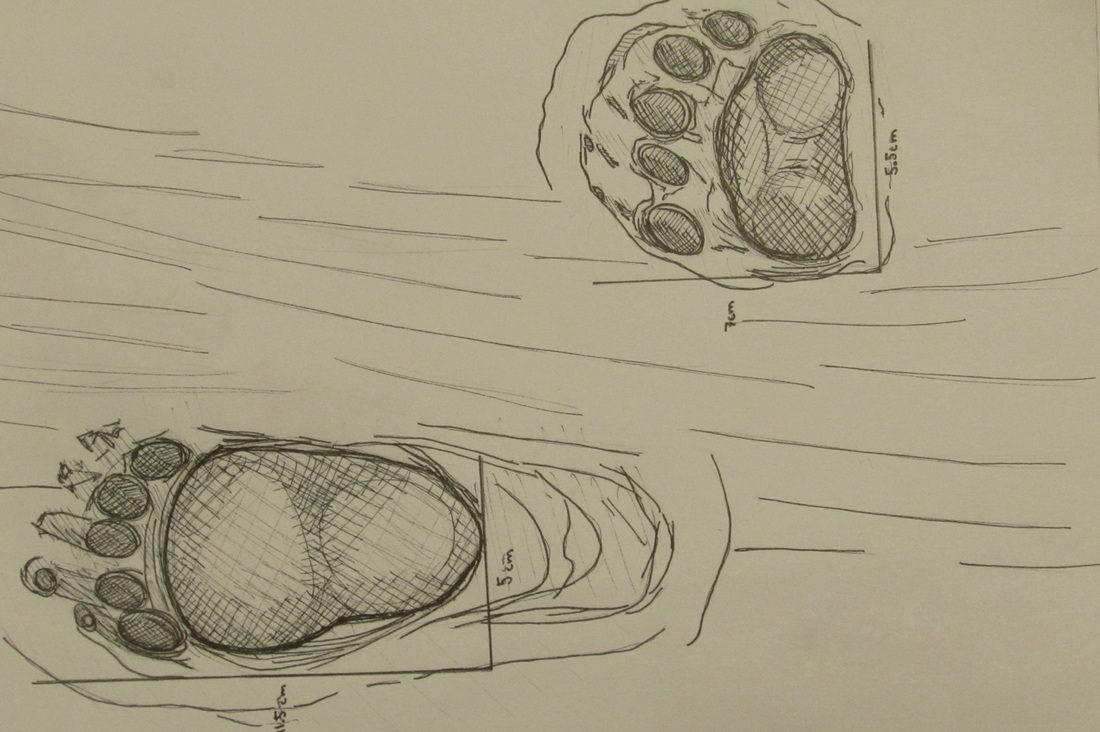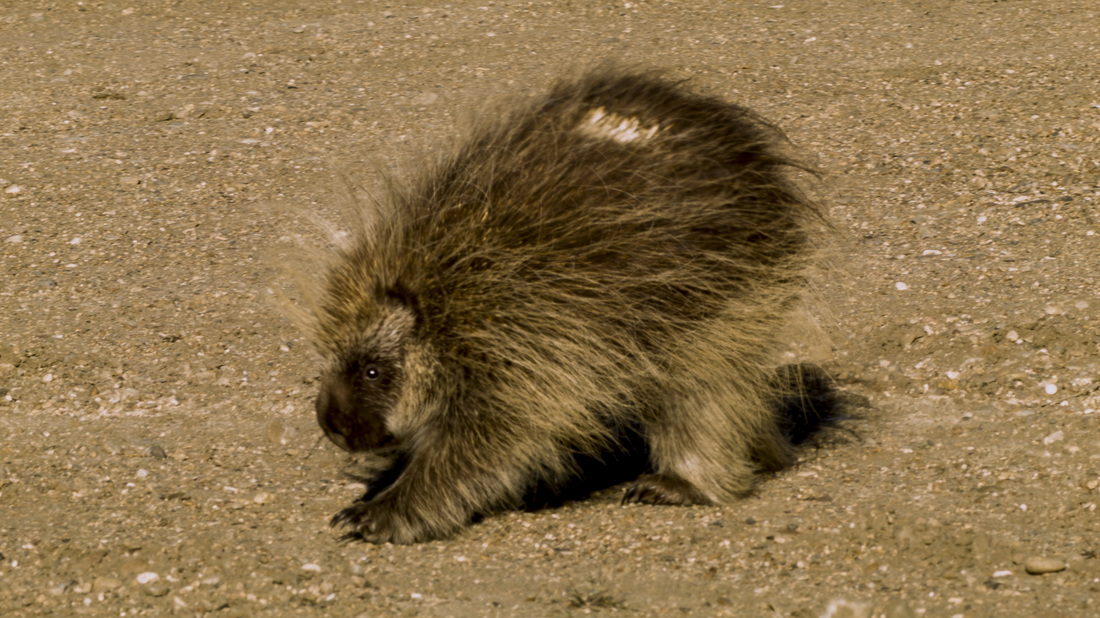ASC Landmark Crew Member
I turned onto a snow-covered two track following tracks of deer, coyote and grouse. At the base of an
irrigation berm, something slipped surreptitiously inside a metal culvert. Moving closer, I saw a pile of
dark pellets at the entrance, and then, the black-tipped quills of a porcupine.
Atop the berm, the animal’s well-used run enticed me to follow. The snow had only been on the ground
for three days, but the layers of tracks and thickness of the trail made it appear as if it had been there
for weeks. I couldn’t help but wonder how many times the porcupine went back and forth each day.
Stepping forward, my eye caught by a golden brown glint in the dry grasses. Was that another
porcupine? I hurried toward it, and then slowed to a calm stalk as I neared.
to watch, peeling off my gloves to place between my knees and the snow. The porcupine was eating dry
seed heads, using its bulbous foot pads to bring them to its mouth and its sharp teeth to neatly nip off
the heads. Close enough to hear teeth at work, I watched it crouched on its haunches, nibbling away.
Another sound cut through the silence—like a woodpecker knocking, but more consistent. Peering
through trees to locate the sound, I saw a shape in the top of a cottonwood. Another porcupine? I rose
slowly, sneaking away to investigate. Down a draw and into a willow patch, I followed porcupine tracks
moving in both directions. Five feet before me, yet another porcupine sat. Startled, it dropped the
branch it was chewing and walked deeper into the willows, quills scratching as they rubbed against the
trees. I picked up the branch to examine the chew marks. The outlines of its incisors were visible in the
cambium.
bark drifted down to the snow. It stopped to grasp the tree between its fat feet and curled in a
surprisingly flexible position. Readjusting, it licked the tree and began chewing again in a slow rhythm.
I watched and listened until the shadows shifted, then turned and left the four porcupines and walked
toward the sinking sun.


